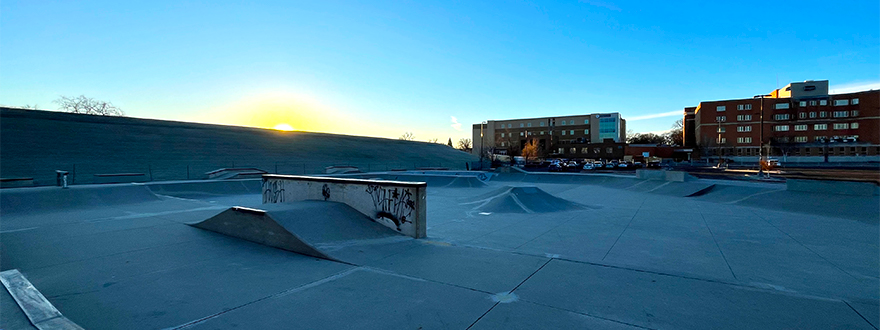
I’ve been neglecting this blog and honestly forgot to post this on here. Annual birthday “part”. I tried this year.


I’ve been neglecting this blog and honestly forgot to post this on here. Annual birthday “part”. I tried this year.
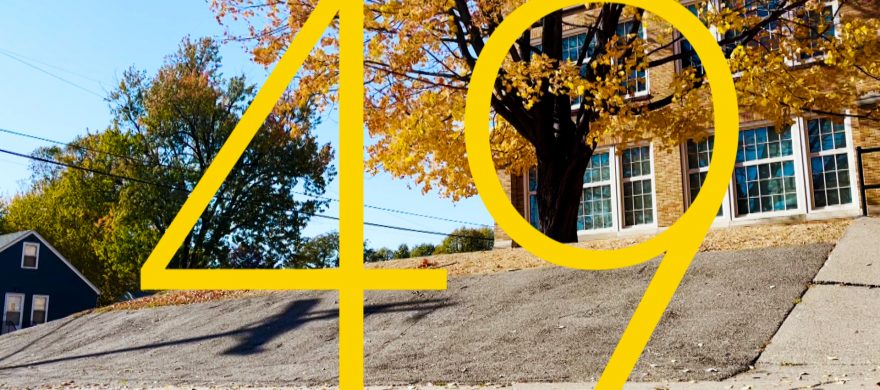
My annual birthday “part”, a collection of stuff I filmed in the past year. Middle aged skateboarding in the Midwest, MN, IO, NE, SD.
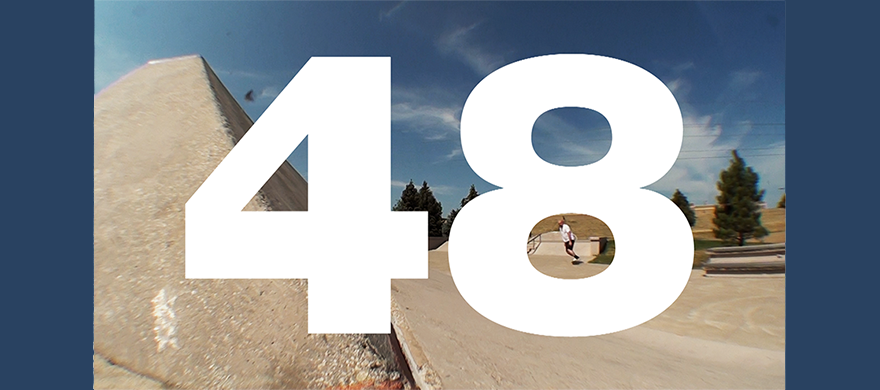
Another year older, stuff I did the past year. Most in MN with a few NYC and AZ parks sprinkled in. If you count the different variations of “ollie” and “50-50” this is 48 tricks.

Another year older, another video of basic tricks, all filmed in NYC. 46 for me started with COVID and ended with a move to the Twin Cities. This is what happened in-between.

I started skateboarding sometime late in 5th grade and quit just over halfway through my freshman year of college, so from early 1985 until early 1993. I started skateboarding again late in July of 2012.
The fact that I have now been skating again for as long as I did during my formative years is blowing my mind. In some ways it feels like no time at all has passed and I have to remind myself that in the last eight years I have divorced, remarried, moved four times, changed jobs, gained a not insubstantial amount of weight and grown a beard.
In the past eight years I have also watched kids grow up at the skate parks. Some have faded away, some are still ripping. Some have had great success while others are more tragic. To them I will have been just another old guy that was around during their formative years. That will seem like forever to them. For me, it just doesn’t seem like that long. Then again, the actual amount of times I skated in the past eight years is only a small fraction of the amount I skated as a teenager. I skated nearly every day then. As an adult I am lucky if I skate twice a week.
Thinking about this blog post I watched a number of old video clips and it is obvious that I have aged. At 38 I was still coasting on the last years of my overly extended youth. It didn’t hurt that for the previous eight years, despite my best efforts at self-sabotage with alcohol and cigarettes, I had also been in great physical shape because of my everyday cycling. 46, well 46 is solidly middle age. I feel it, I look it and I know I don’t have the same physical ability anymore.
In some ways my skating has continued to improve over the years. After the first several months of rapid re-learning the speed with which I picked up new tricks tapered off and I spent years just working on basics. Simple things like how to nollie out of a bank or ollie a hip. All of the nollie and half cab variations on banks. The long road to frontside grinds. Nothing as a dramatic as a kickflip, but a slow steady journey to being more comfortable on the board.
In the last eight years I also lost things. I frontside tail slid a ledge in my first few months of skating and I struggled to do that on a curb this spring. After learning to figure eight carve I then fought for a year to 5050, front scratch and rock ’n’ roll in the shallow ends of bowls. After the last few years of only skating smaller things I don’t think I could do that again without putting in substantial work.
I’ve learned and lost frontside axle stalls or 5050s on transition more times than I would like to admit. I have to relearn frontside pivots every time I skate. I make sure I do a front rock every time there is a quarter pipe because I’m terrified of losing those.
Most annoyingly I have lost my pop. I lost ollieing up the euros at Chelsea a long time ago. I still had it at Owls Head last time I was there but that was for my 45 For 45 part. I struggle to get on any ledges higher than a big curb. Is this because of age, loss of muscle mass, weight gain? It’s probably a combination of all three. If I skate a lot more will ledges feel easier or will I never feel comfortable ollieing high again? That mental fear, the little voice saying “you can’t make it up that”, is as restrictive as any physical limitation.
Some days are still great. The last few weekends have been some of the better sessions I have had this year, but more and more days seem to suck. I struggle to do anything and realize all I’ve done for four hours is ollie tiny banks or front scratch on little transition.
But skateboarding giveth as well as taketh away and thinking back on the past eight years I have some amazing memories.
Hiding in Prospect Park for a few weeks making sure I could ollie again. Failing at Owls Head and going back for revenge the next weekend. Hurricane Sandy and those weeks off as an excuse to check out all the parks. Early weekend mornings (“gentlemen’s hour”) with the Pier 62 bowl crew. Two trips to Garden SK8 in the weeks before it closed. Yearly Old (and Cold) Man Jams. Owls Head becoming my “hangover spot” when I lived down there. A weekend trip to Woodward. Thursday evening after-work mini ramp sessions at Hoboken. Ann Van with Ray. 2ntr visits each winter. Two winters with first the Black Bear Bar bowl and then the mini. Winter Bowl. Our brief infatuation with the East Harlem park. The yearly day after Thanksgiving at Grays Ferry or Paine’s in Philly. The Skatepark of Baltimore for Christmas. MN, ND, SD and AZ parks on trips with my wife. Missions to outer borough or Jersey parks. Upping my game and finding “rain spots” so I could always at least skate flat. The private indoor Cons spot. The Astoria breakfast crew. Spot hunting and two months of solo curb skating during the height of the COVID-19 quarantine.
The absolutely highlight of my last few years of skating has been “skamping” trips. I was somehow lucky enough to get invited by a relatively tight knit group of friends to their yearly skate camping trip. I’ve gone with them twice to Connecticut and once to Vermont. We also took a trip to Boston this past winter where we didn’t camp but we did end up skating outdoors in 20-degree weather all day. That was both awesome and stupid.
So maybe “the real treasure was the friends I made along the way”.
The major difference for me skateboarding now, as opposed to as a teen, is the value I place on other people. As a teenager I was competitive. While I hid it, I was envious of those better than me and dismissive of those worse. We were often total dicks to each other. It took the two months of skating alone during quarantine to really make me realize how much I missed other people. I am solitary by nature but I don’t have the monastic drive to just skate alone and focus on learning tricks. I had to film all of my curb sessions because “likes” became my motivation.
The community is why I am still skating. I am loath to say “homies” but there is a reason that word is used by skaters. Some are friends, some are acquaintances, some are just random people you recognize and nod at when you roll in to the park. Go somewhere often enough and you end up in a nebulous and shifting crew. People get hurt, quit, drift away. Others arrive. That crew is the soul of skateboarding. Unlike how I was as a teen, I now revel in others success and feed off of that positive energy when it is directed towards me. I skate better when I am with other people, not because I want to show them up or impress them but because, in some odd way, I don’t want to let them down.
In the words of the immortal Jeff Grosso:
“When someone skates […] they’re either skating at their personal best or they’re not. And every skateboarder […] can understand that. That’s what skateboarding is, like, are you ripping? If you are ripping, fuck yeah! If you’re not ripping… then why aren’t you ripping?”

Another year older so here is another brief video of a few things I filmed the past year. Mostly variations on themes.
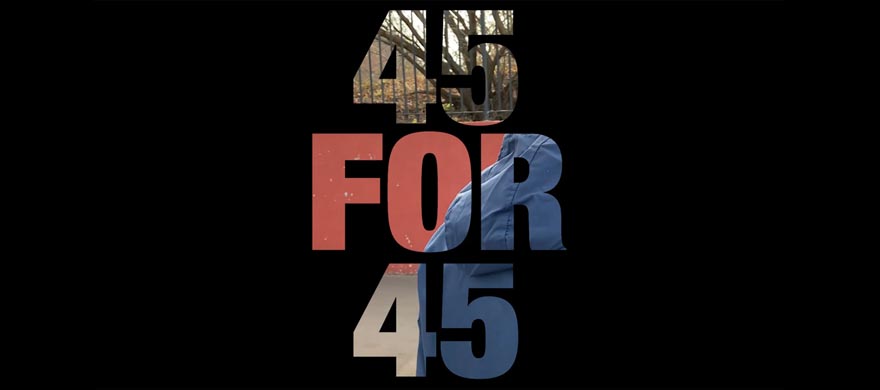
I have had a number of inquiries in to whether this blog is dead. The answer is “maybe”. I have a few ideas for future posts but not the time to write them. People have also asked if I am still skating and the answer to that is “most definitely yes”.
In October of 2018 I decided I wanted to try to film 45 tricks for my 45th birthday. Skating once a week made this a serious challenge but I managed to pull it together in to the video below. It’s not a strict count, a lot of the ollies and 5050s probably shouldn’t be considered separate tricks, but who really cares. Most of what I filmed was pretty basic but I’m still very proud of this because I learned a number of new tricks and others, that I hadn’t done in years, were a huge battle.
Anyway, I am still on an upward trajectory in my skateboarding at age 45 and it feels fucking great.
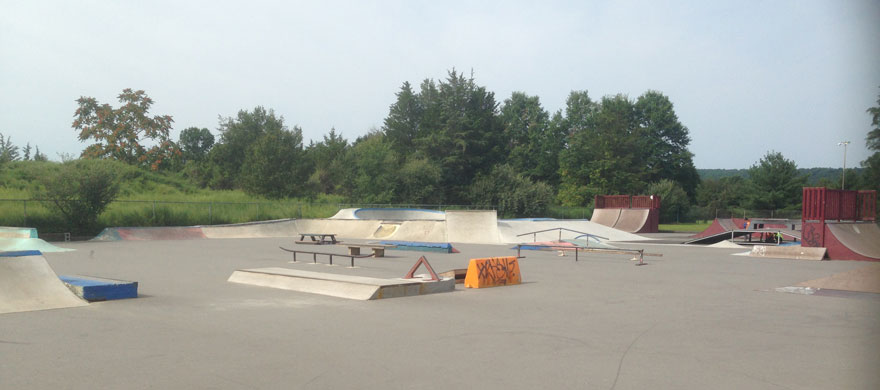
I turned 44 yesterday. Like I did last year, here is a short montage of my skating from the previous year.
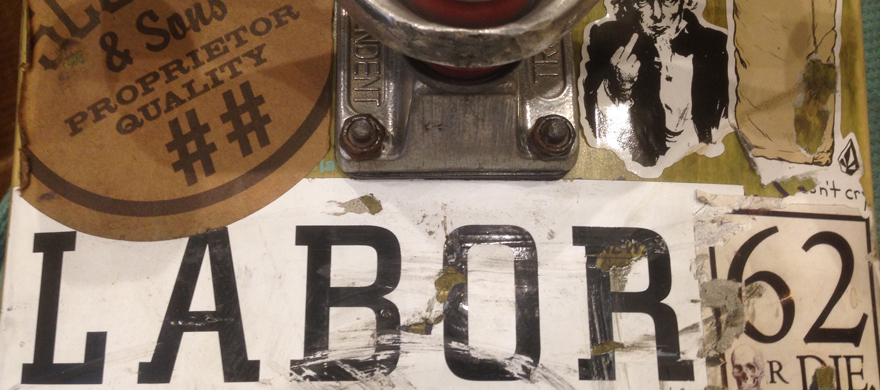
One of the most frequent questions I get asked by people who find this blog is “I want to start skateboarding again, what should I get?” So, this post is the first in a series of guides I will be writing and will hopefully help answer that question.
The short answer to “what should I get?” is go to your local skate shop, get an 8.25” popsicle deck with whatever trucks they have and 54mm hard wheels.
In all honesty, it doesn’t matter much what you get. This first board is to just get you started. You will figure out what works for you by actually skating. That said, I know that I did a lot of online research and wanted a lot more information when I was thinking of starting again, so what follows are my opinions and justifications for my recommendations.
First, support your local skate shop! This is important. If you have a local shop, go there to buy your stuff! Do not buy a big box store garbage board or a complete online. The internet has disrupted skate shops like most other brick and mortar retailers, so it is increasingly important to support them. You will probably be intimidated and feel like a poseur. Guess what? No one cares. If you want to start skating again you are going to have to get used to feeling like that. The local shop will also be able to answer any questions you have much better than randoms like me on the internet. Plus, you can get cool shop stickers, like the LABOR one in the header image above, to put on your board!
For the past few years I have been running two set-ups, the first almost identical to what I suggested above and a slightly larger, big bowl, set-up. What you choose is going to be based on what you will be skating. If you are only skating flat you may go a step down if that feels better to you. If only big transition, then a step up. Differences of ¼ inches or 2 millimeters may not seem like much but those difference become increasingly noticeable the larger they become.
Size is your first and main choice in decks. If you are a 30-40 year old coming back to skating you either rode a 9”-10” wide shaped board or a 7” popsicle when you were young. You are not doing either now. I see this all the time, guys who decided to start skating again and bought something like what they rode as a teenager out of nostalgia. Be it a Powell or Santa Cruz reissue with no nose and no concave or a tiny deck with tiny wheels, both are relics of a different time and place. You are an adult and that was decades ago. There is a reason boards are shaped and sized as they are now and riding something the wrong size is just going to handicap you. The most common sizes for decks are between 8”-8.5” inches now, anything smaller is for children. Buy an 8.25” to start with and fine tune your size on your second and third deck.
A more advanced size consideration, which frustratingly is almost never listed, is wheelbase. Most boards will come in at around 32” in length but the wheelbase will vary by brand. Again, like width, this will vary only by a ½ inch or so, with the standard 8.25” coming in at 14.25”. Just like with how smaller width boards will flip quicker, smaller wheelbase boards rotate easier, while larger boards will feel more stable at speed. Don’t particularly worry about this initially, but later wheelbase will likely become as important to you as width.
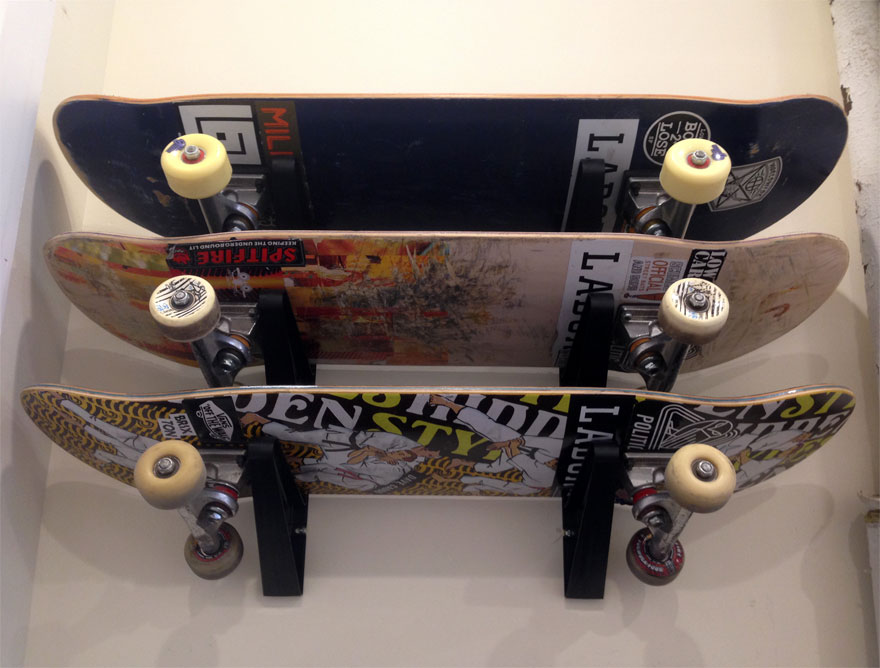
My current quiver. Top to bottom. Cruiser 8.5 Mini Logo, Indys, 58mm OJ Keyframe Filmer Wheels. Bigger Tranny 8.5 Killing Floor, Indys, 58mm Bones SPFs. All Terrain 8.25 Politic, Indys, 55mm Spitfire Formula Fours
There will also be differences in concave that are impossible to put in to measurements, which is yet another reason to visit your local shop. You can stand on the decks to see how they feel to you. I prefer a steeper concave but one of my earlier boards, which I bought off the internet, was too steep and felt odd and distracting, like it was constantly digging in to my front foot. I replaced it very quickly. I would have saved $50 if I’d just gone to my local shop.
A final consideration is wood. The conventional wisdom is that Canadian Maple is vastly superior to Chinese Maple, which is normally used for price point decks and big chain store brands. Many large brands still have their decks made in China using North American wood though. The difference here is debatable. I prefer to buy smaller American made brands and have been riding a series of Politic, Scumco & Sons and Killing Floor decks, so I know that those shops and shapes work for me. Anti-Hero is my go to for the larger brands. At this point I am reticent to try anything different.
I ONLY ride Indys. I’ve been brand loyal to Independent since sometime around 1986. Back then it was Indy vs. Tracker. Indy was NorCal, Thrasher and punk rock. Tracker was SoCal, Transworld and, in my opinion, lame. Those kinds of divisions don’t really exist anymore. I am sure any of the major brands of trucks are fine, just make sure you get the appropriate width truck for you deck. If you don’t know what that is, look this up or ask at your local shop. Don’t worry about lows or hollows or anything out of the ordinary. Those are the kind of things you can experiment with later if you think you may like them.
I personally prefer standard Indys. The only thing I replace is the stock bushings with softer, aftermarket ones. Trucks are one of the worst things to break in so once you have a pair you normally ride them until they break.
I would suggest riding hard wheels. Softer wheels are fun for cruising but do not have the speed and slide I like. Your local shop will have quite a number of different wheels, all of which are fine, but there are two industry leaders, Bones and Spitfire. Bones has the STF (103A or 83B) and the SPF (104A or 84B), while Spitfire has Formula Fours in 99a and 101a. These two pairs of wheels are essentially the same in terms of performance. Which you may prefer will come down to the intangible “feel”. I am a recent convert to Spitfires after riding Bones for years.
As for size, as I said at the start to this post, I recommend 54mm for an all-terrain wheel. Just like board size, the rule of thumb is smaller is for more technical street skating. I personally don’t like riding wheels smaller than 50mm, to me that feels too slow and not friendly on rougher surfaces. I had been alternating between a set of 56mm and 54mm Bones wheels and decided to split the difference and chose 55mm when I switched to Spitfire. This lets them cone and get flipped a few times before they start to feel too small for me. On my larger board I’m riding 58mm. In bowls you will notice a substantial increase in speed with larger wheels. Anything larger than 58mm is overkill unless you are skating huge stuff.
Wheels also come in a variety of shapes, which is normally just the width of the riding surface and the cuts of the sidewalls. Again, this is something to not worry about initially, but you may later find you prefer something as you dial in your set-up.
All the cheap bearings will function the same. They are also cheap enough to be considered disposable. I tend to buy Bones Reds and keep them and clean them when they get shitty. I can normally salvage a few, which I keep in my skate bag in case they are needed. The more expensive, swiss and ceramic bearings will feel very fast and spin forever but unless you are fastidious with the cleanings the lifespan of that performance may not be worth the cost.
This doesn’t matter at all, get whatever is free with your deck. If given a choice I go with Jessup. It’s finer grained then Mob. My personal opinion is don’t get Shake Junt or anything with some all-over print bullshit, unless you want to look like a 13-year-old. Adults ride plain black grip tape. If you want to get creative and break out the razor blade and paint pens and do a fancy grip job, that is up to you, just don’t buy some pre-made garbage.
This matters even less than grip tape. I tend to get one of the many brands with one different colored bolt because I like to put that in the front for easy reference.
Shoes are extremely personal so I’m not even going to try here other than to say don’t buy something with canvas at the ollie spots unless you want to replace your shoes every couple of weeks. Most brands sell more fashion oriented models of their skate shoes as well so make sure you are getting something with rubber, leather or suede in the spots that will rip up. You will likely have to try several different brands and styles until you find something you like. I’d suggest reading the reviews and recommendations on Ripped Laces.
Personally? After bouncing around a bit I’m now on my third pair of Kyle Walker Vans and will probably stick with these until they significantly change them.
Buy a skate tool. It will make your life a lot easier.
You will also eventually want a skate bag, something that can hold your pads and that you can strap your board to. I keep mine stocked for all eventualities, so I can just grab it and go. Besides my pads, it also holds my skate tool, some old bearings, a few old bolts, small first aid kit, wax, tissues, sunscreen, matches a chamois rag, a hat, a lightweight shell, a bandanna, water bottle and a tall boy koozie. It’s probably overkill but I have been glad to have all of the above on multiple occasions.

2017 has been, for me, the year of the frontside grind. Frontside grinds have been an obsession of mine for a while now and it’s been a very long and slow process to get them back. It took me more than four and half years and they are still not quite where I would like them to be. For me they are a benchmark trick, a delimiter. Like kickflips to street skating, frontside grinds on transition are something I think you must be able to do, to be considered a “true” skater.
I think I first formed this opinion during a visit to Baltimore several years ago. After skating the then new bowl in Hampden I stopped in at Vú, the local skate shop next to the park. The owner, Gary Smith, and I briefly talked about the sustainability of skateboarding as adults and he said something to the effect of “as long as I can still frontside grind I’ll be happy”. Gary rips and I, at that point, was still just learning to carve bowls but I took what he said to heart. I couldn’t frontside grind, at least not how I wanted to, and I realized that that was a fundamental skill I was missing. I knew then that I needed to re-learn them.
This is how it is with skateboarding, the goalposts keep moving. Once you learn something it is the coolest thing ever and before you even know it you have moved on to the next coolest thing ever. This is what we mean when we talk about progress. We set these goals for ourselves and then struggle to meet them. “I won’t be a real skater until I can do a frontside grind” was an entirely arbitrary goal I imposed upon myself because of someone else’s opinion but man did it have some psychic weight.
There are of course many different types of frontside grinds. Over the previous years I had accidentally hit some frontside carve grinds in the shallow pockets of bowls, slashed some grinds on banks and even gotten my front smiths locked in on smaller ramps. Stand-up grinds to tail (as illustrated by the header image of this blog) were actually one of the first transition tricks I relearned, after axle stalls. That had always been my go-to trick as a teen and was easy to relearn because it is “safe” since all of your weight in on top of the ramp. What I wanted were real 5-0s though and I couldn’t get them because I was doing them wrong. I was trying them like my grinds to tail. I would get up on top of the coping, tail drag to a stop, teeter and then fall back in to the ramp. I knew that I was not doing them correctly but I couldn’t figure out how to commit to leaning back on them. In order to relearn them the proper way I had to start at the very beginning. I had to learn scratchers. I had to learn to kickturn and just touch the back truck and for some reason I was terrified of this.
The mental aspect of skateboarding is often the most difficult. Through sheer amount of repetition and practice you can drill in the muscle memory for tricks. If you try something (within reason) long enough you will eventually land it. It then takes a million more tries to be consistent with it. But certain tricks you cannot begin to learn without first committing to them. Frontside grinds are one of these tricks. You have to be fully committed to them and by fully committing you are risking a slam. Hopefully if you lap over or slide out you have enough warning that you can kick the board out and run out of them but there is the ever present danger of just going down hard. Not to mention missing under, which can send you ribs first in to the coping. The fear can be crippling.
Yet if the mental and physical aspects of skateboarding are the two main factors in learning tricks, there are other, more nebulous things at play. One of these is just something I call “board control”. Board control to me is progressing in skateboarding without learning tricks. It is just defined by the amount of time spent skateboarding and how comfortable you are on the board. A trick you tried and couldn’t get previously will come together surprisingly quickly as your board control improves. Board control is knowing how to react to unfamiliar or unexpected situations. Experienced skateboarders can drop in to an unfamiliar bowl and figure out how to carve and pump it right away. They can hit a crack and adjust their weight so they don’t fall. Something can go wrong and they will be able to react and correct it. Novice skateboarders often look “stiff” and this is just not because of their posture. The board control that comes with practice gives a fluidity to your skateboarding and this fluidity allows you to do things that you previously couldn’t.
This is how I like to progress. While I normally work on new tricks each session, I generally only give them a small number of tries. It is rare that I put in the work and dedicate myself to a few hours of trying to land something new. I, instead, like to just skate and let the slow, steady, cumulative process of gaining better board control help me learn the tricks faster at a future point. This is what happened with frontside grinds. After a few years of sporadically trying them, including learning and then losing them on two separate occasions, it all finally came together naturally.
It began at the mini bowl at 2nd Nature. This indoor park, in a small town on the Hudson River an hour train ride north of the city, has become a winter destination spot. Two or three times a year, whenever the weather is bad enough, we take the long trip up to skate it. Despite the relatively few times I have been there, it has consistently helped me unlock some of the fundamentals I was missing. I learned how to figure 8 carve a bowl there for example. This year it was frontside grinds and that happened by complete accident. The bowl is so small and so fast that coming back in to shallow I frontside kickturned one wall and scratched the truck. The next run I did it again, intentionally. I remember saying to my friends “This won’t seem like a big deal to you, but I just touched my truck”.
This past winter I was also lucky enough to have friends who had memberships to Winter Bowl, the private indoor spot in south Brooklyn. Its namesake, the bowl itself, is tight and one of the more challenging things I have skated. The mini ramp on the other hand was more my speed. This ramp is a little bit steeper and taller than I am comfortable with and for a few sessions I struggled to even axle stall there. Finally, one day I felt comfortable enough to scratch some grinds. I missed low a number of times but pulled off enough that I got over my fear of touching the coping.
Early in the spring I took off work one weekday and trekked over to Hoboken for the sole purpose of skating the small mini and doing nothing but frontside grinds. It was drizzling by the time I got there but I was on enough of a mission that I waited it out and mopped off the ramp a few times with the chamois I keep in my skate bag. It paid off. I was now no longer afraid to scratch grinds but I still couldn’t really stand up on them to get a proper 5-0. That happened in the Bronx.
At the River Ave. park in the south Bronx, there is a section of quarter pipe that slopes up from about one foot up to something close to five foot. Because it starts so small and moves up so gradually it was the perfect learning spot and for the first time I was able to stand up on my grinds. I took this back to Hoboken in the following weeks and had one of the most fulfilling days of skateboarding ever. Not only was I able to stand up on my grinds and do real 5-0s on the little ramp but, with the encouragement of my friends Ray and Shark Dog, I was also able to scratch a few on the bigger ramp as well (as seen in the photo above). That was enough to let me start to do these scratchers almost anywhere. I am now comfortable enough with them and have enough board control that they have become one of my go-to tricks. I am still not standing up on the grinds on anything over four foot, on bigger ramps my weight is still solidly in the ramp, but it is just a matter of time and practice before those grinds turn in to proper 5-0s too.
Now I just need to learn to kickflip.